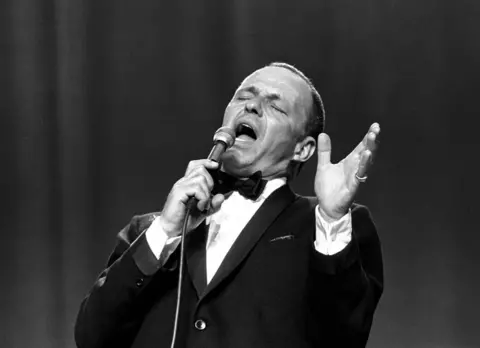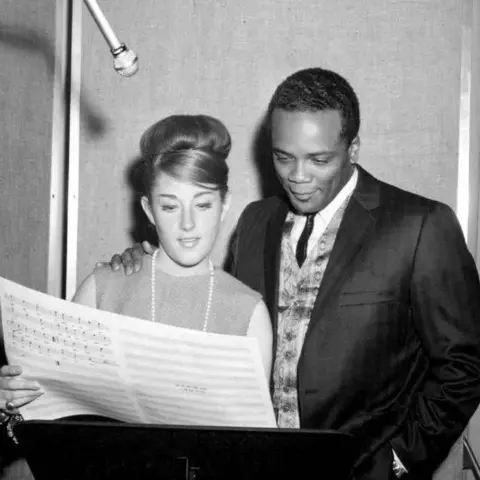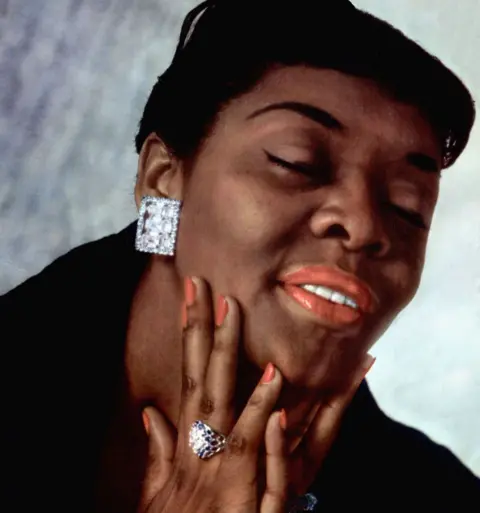


FAST DOWNLOAD
“Music is sacred to me,” Quincy Jones once said. “Melody is God’s voice.”
He certainly had the divine touch.
Jones, who had died at the age of 91, was the right-hand man to both Frank Sinatra and Michael Jackson, and helped to shape the sound of jazz and pop over more than 60 years.
His recordings revolutionised music by crossing genres, promoting unlikely collaborations and shaping modern production techniques.
Here are 10 songs that showcase his versatility and brilliance in the studio, and his ability to draw the best out of the musicians he worked with.
1) Michael Jackson – Billie Jean
 Getty Images
Getty ImagesMichael Jackson met Quincy Jones on the set of the 1978 movie The Wiz, and asked him to produce his next album. That record was Off The Wall – a disco extravaganza that established Jackson as a solo star.
They teamed up again for 1982’s Thriller, which arguably remade the pop business. Not only did it produce seven top 10 singles; but it crossed racial barriers, appealing equally to black and white audiences.
Key to the success was Billie Jean, a dark tale about the groupies Jackson met while touring with his brothers. As a producer, Jones wasn’t keen on the track at first – arguing with Jackson about the long instrumental opening.
“I said, ‘Michael we’ve got to cut that intro,’” he later recalled.
“He said, ‘But that’s the jelly! That’s what makes me want to dance.’ And when Michael Jackson tells you, ‘That’s what makes me want to dance,’ well, the rest of us just have to shut up.”
With those words ringing in his ears, Jones kept the arrangement lean and funky. He even instructed sound engineer Bruce Swedien to create a drum sound with a “sonic personality” that no-one had ever heard before. The result is one of the most recognisable intros in the history of pop.
- Listen to Billie Jean
2) Frank Sinatra – Come Fly With Me (Live at The Sands)
 Getty Images
Getty Images“The friendship was so strong. You can’t describe it,” said Jones of his partnership with Frank Sinatra – which extended far beyond the recording studio.
“Seven double Jack Daniels in an hour… [Sinatra] invented partying.”
After establishing their relationship on 1964’s It Might As Well Be Swing, Jones helped Sinatra re-arrange his signature songs for a four-week residency at the Copa Room in The Sands hotel, Las Vegas.
“It was probably the most exciting engagement I have ever done in my life, since I started performing,” Sinatra later recalled.
Accompanied by the Count Basie Orchestra, the star sounds perfectly at ease, breezing around standards like I’ve Got You Under My Skin, Fly Me To The Moon and You Make Me Feel So Young.
But it’s Come Fly With Me that most perfectly captures the vitality of Jones’s new arrangements, especially in the charismatic interplay between Sinatra and the brass section.
No wonder that it was chosen as the show’s opening number – as captured on the award-winning live album, Sinatra At The Sands.
- Listen to Come Fly With Me (Live)
3) Lesley Gore – It’s My Party
 Getty Images
Getty ImagesLesley Gore was just a teenager when her vocal demos made their way into Quincy Jones’s hands in the early 1960s. Up to that point, he’d been working with jazz singers like Sinatra and Sarah Vaughan – but he heard something he liked on Gore’s tape.
“She had a mellow, distinctive voice and sang in tune, which a lot of grown up rock ‘n’ roll singers couldn’t do, so I signed her,” he wrote in his autobiography.
For their first session, Jones picked It’s My Party out of a pile of 200 demos and got to work. He double-tracked Gore’s voice, adding little flourishes of brass and unexpected chord changes that perfectly evoke the song’s adolescent angst.
He then rush-released the single, after discovering that Phil Spector had plans to record the same song with the Crystals. It duly topped the US charts and went to number nine in the UK.
- Listen to It’s My Party
4) Quincy Jones – Summer In The City
 Getty Images
Getty ImagesRecorded by The Lovin’ Spoonful, Summer In The City is a 1960s rock classic, full of ominous organ chords and powerful drum hits that capture the sticky filth of an oppressive heatwave.
Quincy Jones version, recorded for his 1973 album You’ve Got It Bad Girl, is almost unrecognisable as the same song. Lazily chilled-out, the Hammond organ is played with a featherlight touch, and the drums are gently brushed.
Most of the lyrics are excised and, when they arrive at the 2’30” mark, they’re sung with almost heavenly serenity by Valerie Simpson (of Ashford and Simpson fame).
Originally released as a b-side, it’s become one of Jones’s most influential songs. According to WhoSampled.com, it’s been sampled on 87 other songs, including tracks by Massive Attack, Eminem, Nightmares on Wax and The Roots.
- Listen to Summer In The City
5) Dinah Washington – Mad About The Boy
 Getty Images
Getty ImagesAnother example of how Jones’s skill as an arranger could completely change a song.
Mad About The Boy was written by Sir Noël Coward, for the 1932 revue Words and Music. In the original, it was sung by four different women, each expressing their love for an unnamed film star (rumoured to be Douglas Fairbanks Jr) as they wait in line to see one of his films.
It’s funny and quirky and clever – but when Dinah Washington covered the song in 1961, Jones slowed it down and switched the time signature from 4/4 to 6/8, allowing the singer to prowl through the lyrics with a newfound carnality.
Overlooked at the time, it gained a new lease of life in 1992 when it was used to soundtrack a Levis advert and crept into the UK charts for the first time.






















































